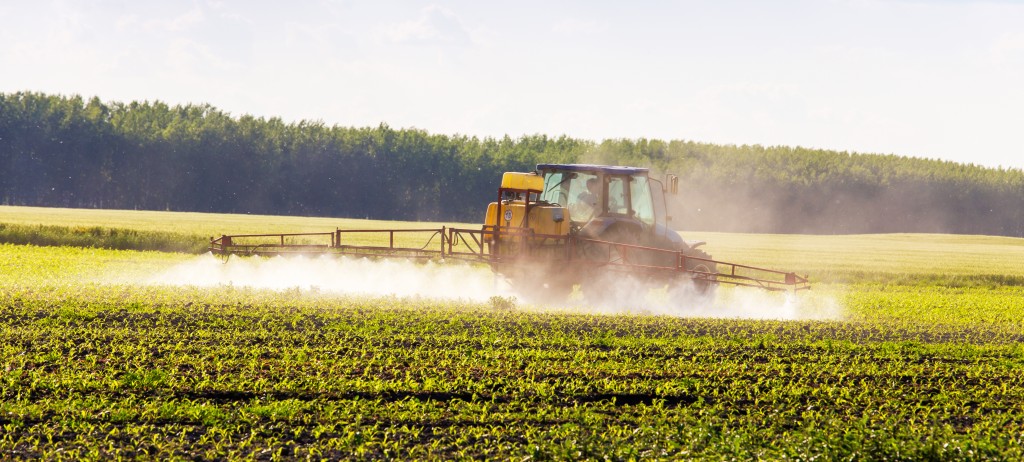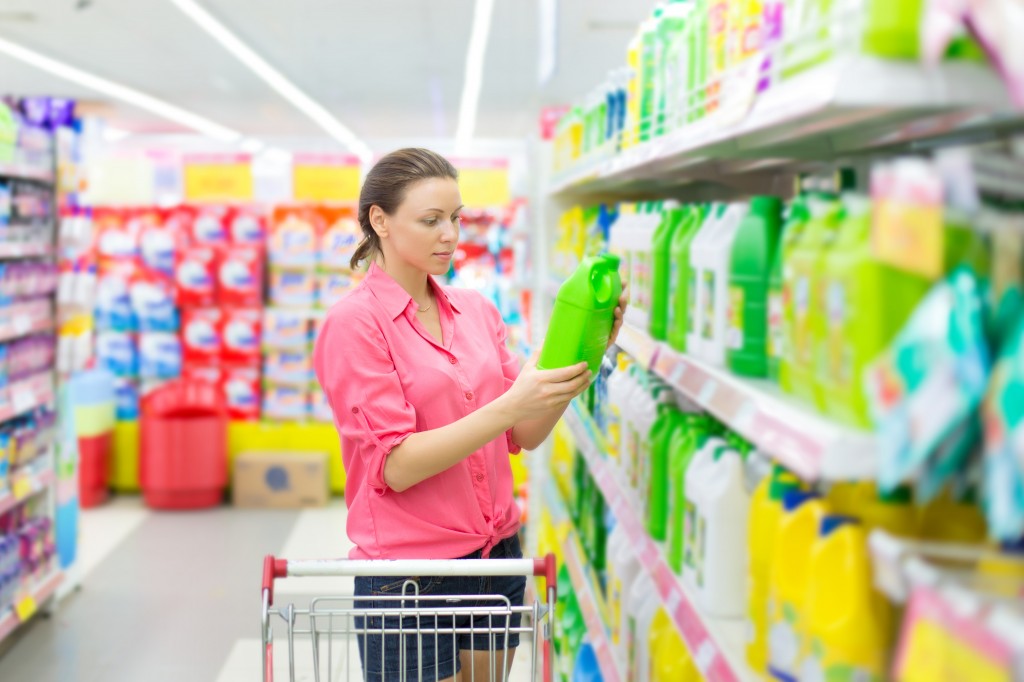 I’m not too much of an alarmist. Or a sensationalist.
I’m not too much of an alarmist. Or a sensationalist.
But lately I’ve been thinking about how to build optimal health. I’ve written and edited a series of articles about Rejuvenation, including the topics of detoxification and avoidance of toxins. I’ve also blogged on liver and kidney detoxification, intestinal cleansing, and juicing for health.
I agree with individuals (nutritionists, herbalists, and others) who say, “the strongest defense is a good offense.” Meaning that when you start implementing many healthy practices, they tend to build health in ways that mere avoidance cannot. For example, when you combine regular juicing with a great diet, exercise, nutritional supplements, and a powerfully positive outlook.
However, today I’m thinking about avoidance. About defense. About how difficult it can be for many people to avoid the very things in their environments that undermine health.
Knowing what things to avoid is a matter of education. But it’s also about vigilance, establishing healthy routines, and developing a mental filter that emphasizes “natural” thereby supporting a systematic system of avoidance that centers on natural living.

AVOIDANCE IS PREVENTION
One might well ask why avoidance is so necessary. It’s probably the least enjoyable and most difficult aspect of creating optimal health. It’s not even fun to talk or write about. Because who wants to spend their time thinking about things to avoid?
It’s obvious that avoiding toxic pesticides is desirable. But it’s not so much fun asking your neighbor not to spray 2,4-D on her lawn. Or finding out which ingredients in snacks at your child’s school or camp are genetically modified (GMO). Yet, these are often very essential things.
NOT UNLIKE YOUR CAR
Another way to view avoidance is to take the analogy of your body as a automobile. You routinely spend time taking care of it, changing the oil and other fluids, rotating the tires, etc. You never wait until the oil is degraded, the tires go bald, or the timing belt is about to break before taking the actions necessary to keep your vehicle in good operational order.
But then you find yourself facing bad roads, potholes, extreme temperatures, bad weather, and other challenges. Some challenges are expected and that’s part of the reason you take good care of it. The conditions of the road are rarely under your control even if you can select your route. But that doesn’t mean you drive recklessly or pretend real dangers don’t exist. They do. And once your car lies stuck in a ditch, it’s much harder to get it out than simply preventing it from going there in the first place.
Keeping your car out of the ditch is the essence of avoidance. Because just preventing your vehicle from getting stuck in a ditch gives you far more options for taking evasive actions. Most of which will help keep your vehicle operational.
Avoidance of toxins is prevention. It’s taking care to ensure your “vehicle” (i.e., body) is kept as clean and pure as possible in a toxic world. It’s defensive driving at its finest.
DEATH BY A THOUSAND TOXINS?
The title of my article may sound extreme. But what’s more extreme is the actual situation we face in our toxin-laden, industrial civilization. The truth is that there are toxins prevalent in our air, water, soil, homes, and in foods that make it nearly impossible not to have a significant level of exposure and contamination.
The toxins I’m talking about include everything from pesticides and GMOs to heavy metals, VOCs, plastics and endocrine-disrupting chemicals, halogens like fluoride and chlorine, as well as toxin-laden household and personal products.
There are many reasons why we face toxic exposures not just daily, but continuously. And that’s the problem. Each toxin we face may be mildly harmful, dangerous, or even deadly by itself (especially in large quantities or when a person is acutely exposed).
But when the effects of these toxins are considered together, they act synergistically in ways that can be complex and not always easily measured by studies that focus solely upon one of them.
That’s a problem with traditional toxicity studies. A particular chemical may exhibit moderately toxic effects, but when combined with one or more other toxins may result in a “cocktail” that is many times more toxic than (would ever be guessed by looking at the data for) any one of them. Moreover, when toxins combine in such mixtures, they interact in unexpected and unpredictable ways. Mixtures can exhibit exceptionally adverse effects.
Furthermore, toxic substances affect different individuals in different ways (depending on things like biochemical individuality, genetic predisposition, previous exposures, and even blood type).
For example, it is now known that contaminants (e.g., endocrine disrupting chemicals) interact with genes in ways that traditional scientific analytical methods used to assess toxicity did not acknowledge. These interactions can occur even at extremely low levels.
While toxins harm everyone, unborn children as especially at risk. That is, exposures in the womb can set in motion health conditions that will play out over the course of a lifetime.
One thing is certain: our bodies are under assault. In fact, studies show the blood of the average person (including babies) contains hundreds of synthetic chemicals, including hormone disruptors like bisphenol A (BPA).
The effects of exposure to the many toxins prevalent in our homes and offices, as well as in the air, water, and soil are not always cumulative effects resulting in death, as they are overall reductions health, vitality, and wellness.
Adverse effects may include weakened immunity, toxicity in the body, reduced capacity to detoxify, allergic responses, nutrient deficiencies (e.g., due to increased requirements for nutrition), and other health-harming effects.
SELF RESPONSIBILITY – BECAUSE NO ONE WILL DO IT FOR YOU
One of the foundational elements in the HPDI Rejuvenation Program is “self responsibility.” That is, if you really want to become healthy, then you must take it upon yourself do whatever it takes to become healthy. That means focusing on what creates health. And that almost always means “natural.”
Self-responsibility doesn’t mean you don’t learn from others (of course, you will!!), but it means self-reliance in the sense of discovering the truth about what works best for you. Again, that will almost always mean “natural.”
TOXINS, TOXINS EVERYWHERE
Just one US state has passed anything resembling comprehensive legislation regarding toxic chemicals, for example. That law is California’s Proposition 65 (Safe Drinking Water and Toxic Enforcement Act). It covers about 800 chemicals and substances known to the state to cause certain types of harm (cancer, reproductive health issues, etc). There are plenty of things it doesn’t cover (like GMOs). Other states and the Federal government should follow the lead of California, and go even further with the intent to protect consumer health.
The failure of the federal government to go beyond banning or reducing “acceptable” levels of specific substances (think asbestos or leaded gasoline) to pass comprehensive legislation with respect to toxics underscores the reason taking responsibility for your health is the only choice when it comes to protecting yourself and your family from the onslaught of environmental poisons we face every day.
For the most part, governments and corporations are simply not looking out for your health. Things are changing for the better (in many instances), but there is a long way to go.
For example, experts guess that there are approximately 50,000–80,000 unregulated chemicals in the United States. Many have been in use for decades with no safety testing. In recent years, there has been increased discussion about comprehensive testing for toxicity, yet only about 300 have been tested. And just a handful restricted for use as a result of testing. It has been noted that higher standards in Canada and Europe show about 10–30% of US chemicals require a stricter level of control. That adds up to at least 5,000–10,000 chemicals requiring restrictions (or bans) on their use.
…AND WEAK LAWS FAIL TO PROTECT US
A major problem is that US Toxic Substances Control Act of 1976 (TSCA) has little power to regulate toxic chemicals. Most of the chemicals that were already in use at the time were considered “safe.” Under that law, a chemical must be proven to be harmful in order to restrict its use instead of needing to be proven safe. Essentially, if there is no requirement for testing, then chemicals cannot be proven unsafe. Certainly, chemicals once presumed “safe” should be tested, and their use restricted if testing shows them to be unsafe.
Lawmakers agree TSCA is ripe for reform and negotiations are ongoing in the US Senate and House of Representatives. A major problem is that attempts to enact stringent “safe chemical” laws face strong opposition from the chemical industry both at federal and state levels. This results in compromise bills that appear to improve safety, but in many ways are weakened to such a degree as to render them ineffective for the purposes of significantly protecting health.
Environmental advocates point to the difficulties in revising US chemicals policy at the federal and state levels as indicative of competing interests hindering the process of developing and enacting comprehensive chemicals policy reform. At the state level, environmental groups see revisions to the California Green Chemistry Initiative (CGCI) as eliminating and weakening important provisions that would make the law effective for regulating toxic substances.
Avoidance of toxins would be easier if our laws did not permit a wide range of toxic chemicals to be used without proper regulation.

(THESE ARE) A FEW OF THE MOST TOXIC THINGS
Toxins to which we are routinely exposure abound and surround us daily. (That sounds alarmist, and perhaps it is!!). It almost seems like a conspiracy (and perhaps that’s true, too!).
What I mean is that when one looks around and examines the toxins to which we are exposed routinely, it begins to appear that we are being poisoned intentionally. I don’t mean to suggest that someone decided we all needed a certain amount of poison daily (not unlike King Mithridates intentionally exposing himself to poisons in order to immunize himself from them in A.E. Houseman’s poem “A Shropshire Lad”).
Instead, it appears that high-level decisions made in the past (and some in the recent past) based on then-current knowledge (or no knowledge) have not been reviewed in the wake of newer, more current knowledge. That is shameful, harmful, and unnecessary. We thereby are exposed to toxic substances known to cause harm and in mixtures magnifying adverse effects in unexpected ways.
Here is a partial list of toxic substances to which routinely we are exposed:
• GMO foods and seeds (e.g., soybeans, corn, canola)
• Pesticides
• Herbicides (including RoundUp and 2,4-D)
• Fluoride (toxin halogen)
• Chorine (another toxic halogen)
• Bromine (halogen used in brominated flame retardants and certain foods)
• Pthalates (plastic softeners used in vinyl, cosmetics, and thousands of other applications)
• Plastics (endocrine disruptors) (especially avoid consuming foods or liquids from plastic or plastic-lined containers)
• Artificial Sweeteners (Aspartame / Nutrasweet, Splenda / Sucralose, Saccharin)
• Brominated Vegetable Oils (BVO)
• Household Chemicals (containing too many toxins to list individually)
• Lawn and Garden Chemicals
• Fracking Chemicals (typically not required to be disclosed)
• Food Additives (including artificial colorings, flavoring, and preservatives)
• Toxic Foods. A list of toxic “foods” may differ depending on individuals’ sensitivities, but for many people these are commonly toxic: wheat and/or wheat gluten, high fructose corn syrup, soy foods, etc. There are a few recent instances where harmful “foods” or ingredients have been banned (think partially hydrogenated oils), typically years after scientific studies indicated their toxicity.
• Endocrine Disruptors: A major health hazard is consuming foods or liquids from plastic or plastic-lined containers. Everyone knows about the dangers of bisphenol A, but that is just one of many of ingredients in plastics and resins exhibiting hormone mimicking effects in the body. In fact, endocrine disruptors are everywhere in our environment.
We are routinely exposed to endocrine disruptors not only because of the ubiquity of plastics, but also because many other substances (pesticides, heavy metals, phthalates, perfluorinated chemicals (PFCs) (e.g., in non-stick cookware) disrupt endocrine function. This is just one of 800-pound gorillas sitting in the room. Science has shown the dangers of endocrine disruptors, but minimal efforts have been implemented to act upon this knowledge.
Our Stolen Future by Theo Colborn, et al. is a tour de force examination of the scientific studies proving the adverse effects of endocrine disruptors. Lindsey Berkson’s Hormone Deception offers practical steps you can take to protect yourself from them endocrine disruptors.
• Electromagnetic Fields (EMFs). As the world becomes ever more wired, studies are conclusively showing the adverse health effects of electromagnetic fields on human health. This topic is large enough to be subject of a future blog article.
However, there are things you can do to reduce EMF exposure, including: limiting mobile-phone use and talk time, using a speaker phone or headset for extended conversations, keeping routers and hotspots far away from users, disconnecting networks when not in use, keeping bedrooms free from electronic devices (e.g., at night), and avoiding use of devices while they download large amounts of data.
You can test the field strength of computers, laptops, “smart meters,” and wireless devices using a TriField Meter (or similar). Many different types of devices exist for homes, offices, and mobile devices that are designed to counteract the adverse effects of EMFs. Consider trying one to reduce the adverse effects of EMFs.
TOTAL TOXIC LOAD
I re-emphasize that by themselves, any one of these substances may only be mildly toxic. But when you add them up and consider their combined effects (which better reflects the reality of the environments in which most people live), they are a major force adversely affecting health. They contribute to a lack of optimal well-being, dis-ease, reduced quality of life, shortened lifespan, and earlier than necessary decline (e.g., disability, dis-ease, dementia, death).
The lack of consideration regarding the total toxic load to which the average person is exposed from unregulated chemicals and GMOs to toxins in air, water, and soil is one of the travesties of our time. Future generations will probably look at the 20th- and early 21st-century as a dark age filled with ignorance with respect to the widespread use and distribution of substances harming health.
PRACTICAL STEPS FOR AVOIDANCE
There are several important steps you can take to avoid exposures to common toxins, and thereby reduce the total load on your body and detoxification organs.
• Consume Clean Foods and Water. This means eating 100% organic (or whenever possible), avoiding GMO foods, and usually shopping at natural foods stores or growing your own foods. It also means limiting processed foods, which are usually nutrient-depleted and filled with preservatives, additives, and fillers.
My list (above) includes many items you should avoid, but artificial sweeteners are absolutely to be avoided at all costs. This means no diet sodas containing aspartame and other artificial sweeteners (as if I needed to repeat this information). Stevia and certain sugar alcohols (polyols) like erythritol are healthier alternatives, if you must use a sweetener.
Water should always be filtered. Use an undersink, countertop, or whole-house filter or filtration system to remove/reduce chlorine, fluoride, heavy metals, industrial contaminants, and other chemicals found in tap water.
Avoid plastic containers and cookware. Use glass, ceramic, stainless steel, or wood. Never use non-stick cookware. Avoid aluminum cookware.
• Clean Green. This means throwing out toxic household chemicals, including toxic cleansers and degreasers, tub and tile cleansers, glass cleaner, laundry detergents and fabric softeners (and chlorine bleach), kitchen and bathroom chemicals, etc. Replace these chemicals with natural substances baking soda, borax, vinegar, and lemon juice. In many instances, you can replace commercial products with natural products found in natural foods stores.
Read labels carefully. If you cannot pronounce an ingredient, it probably isn’t very natural and is most likely something to avoid.
• Take Care of your Body. Avoid toxic commercial personal care products. This includes most commercial soaps, shampoos and conditioners, toothpastes, deodorants, etc. Replace with non-t0xic equivalents found in natural foods stores or available online.
For example, Dr. Bronner’s Magic Soaps offers personal care products that are much better than conventional commercial products. Uncle Harry’s Natural Products makes non-fluoridated toothpaste, organic toothpowders, and other natural products.
Use a shower-head filter, faucet filter, or whole-house filter to remove chlorine and other chemicals from shower and bath water.
• Home, Garden, and Garage. Throw out your pesticides and herbicides. Use natural alternatives like cedar oil (e.g., Red Texas Cedar), boric acid, diatomaceous earth, vinegar, or cayenne pepper (fresh, powder, or tincture). Weed by hand or use a weeder. Avoid gasoline fumes from mowers or leaf blowers. Instead use electric-powered tools and appliances.
Store paints, solvents, and automotive chemicals in minimal quantities and (as far as possible) away from where people and pets are likely to be exposed.
Place spa/pool water filters on garden hoses. A good spa/pool water filter will remove chlorine, fluoride, heavy metals, and industrial contaminants from the water you use in your yard, garden, and for pets. It will help preserve the quality of your soil. I purchase PreFresh spa/pool filters by the case and these work nicely for all purposes. (Note: If you already have a whole house filter, you may not require additional filters attached to garden hoses. But it won’t hurt, either.)
• Think ‘Natural.’ While I’ve discussed foods, household cleaners, and personal products, I haven’t covered every conceivable instance where toxic exposure require avoidance. The key is to “think natural” and to apply a “natural” mindset toward every type of product, appliance, chemical, or item you purchase, use, or store. Ask questions like “Is this something potentially toxic?” and “Is it the most natural?”
Thinking “naturally” and applying a mental “filter” that emphasizes natural (e.g., versus untested, unregulated, synthetic chemicals) among the best means to help you to maintain the most natural lifestyle possible, and systematically avoid toxins. In fact, consciously “thinking natural” can help you more than almost any type of education (especially because most of us will never take a toxicology course) in keeping your life as natural as it can be.

AVOIDANCE WORKS
Avoidance works extremely well when properly implemented. Today there are so many toxins in our environment that just avoiding toxic foods, household products, lawn and garden chemicals, and personal care products can mean significantly greater health for you and your loved ones.
Simply substituting natural foods and natural substances (e.g., simple, non-toxic cleaners like baking soda and vinegar) can means big differences in how you (and your loved ones) feel, look, perform, and live.
Avoidance is just one part of the HPDI Rejuvenation Program. The Rejuvenation Program is comprised of a series of practices, protocols, supplements, and health-building elements that together are designed to help create and support optimal health, healing, and well-being.
I hope you find this information useful and applicable. Avoiding and removing toxic substances from your life is one of several important foundational practices upon which stronger health can be created and maintained.
SOURCES & RESOURCES
Preventing Toxicity: Rejuvenation Program, Part Two
Chemical & Environmental Toxicity Syndrome (supplement schedule)
Ultimate Protector (Nrf2 formula)
Dr. Hank Liers Original Formulas
BOOKS & WEBSITES
Our Stolen Future: Revisited 15 Years Later (video)

